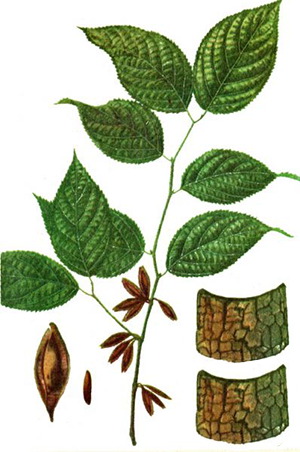Fundamentals of YHK - Eucommia

Much has been said of the efficiency and efficacy of YHK, a natural liver therapy from Japan. But what enables YHK to achieve what western medicine has yet to be capable of - normalise ALT & AST levels and prevent liver injury? The answer lies in the formula of YHK, instead of using a single chemical component, YHK is form by a few unique and valuable ingredients with a patented formula and Eucommia is one of the fundamental ingredients of YHK. Eucommia, also known as Du Zhong in Chinese, is one of the typical healing herbs used in traditional herbalism.

Eucommia comes from Eucommia ulmoides Oliv., a rare tree species that survived from ancient age. Unfortunately most of its species have become extinct, the type found in China is the only living species left currently. Nowadays, most of the eucommia originate from cultivation near the middle of Yangtze River and the southern provinces. [1] The rare find and its numerous health benefits have contributed to eucommia’s high economic value.
According to traditional herbalogy, eucommia is considered as sweet and slightly acrid in taste. It is widely used for treating the liver and kidney. [2] Eucommia has several pharmacological properties such as antioxidant, anti-inflammatory, antiobesity, anti-tumour, anti-aging, hepatoprotective, and neuroprotective properties. [3] Research has confirmed that Eucommia is beneficial to fatty liver, as it can increase fat oxidation in the liver.

Several recent studies have indicated that eucommia extracts demonstrate effectiveness for non-alcoholic fatty liver disease (NAFLD), which is caused primarily by obesity or type II diabetes. The two active compounds geniposide and aucubin in eucommia are found to "enhance lysosomal activity and regulate lysosomal BAX translocation, leading to resistance against hepatic lipotoxicity. Eucommia ulmoides extract appears to be a possible treatment strategy to prevent or treat non-alcoholic fatty liver disease (NAFL) and its associated toxic conditions." [4]
In addition, eucommia also exerts regulation on the immune system, endocrine system, central nervous system, circulatory system and urinary systems. This coincides with many herbalists’ view that long term usage of eucommia can help weight loss and rejuvenation. [1][2]
- Du Zhong Eucommia Bark - Chinese Herbal Medicine. Retrieved from https://theory.yinyanghouse.com/theory/herbalmedicine/du_zhong_tcm_herbal_database (Accessed: 2016-08-20)
- Eucommia Bark Benefits, A Tonic Herb for the Bones and Joints. Retrieved from http://www.superfoods-for-superhealth.com/eucommia-bark-benefits.html (Accessed: 2016-08-20)
- Health-Promoting Properties of Eucommia ulmoides: A Review. Retrieved from http://www.ncbi.nlm.nih.gov/pmc/articles/PMC4793136/
- Eucommia ulmoides Cortex, Geniposide and Aucubin Regulate Lipotoxicity through the Inhibition of Lysosomal BAX. Retrieved from http://www.ncbi.nlm.nih.gov/pmc/articles/PMC3929538/ (Accessed: 2016-08-20)
- * All research and clinical data should be used as reference purposes only, results may vary.






